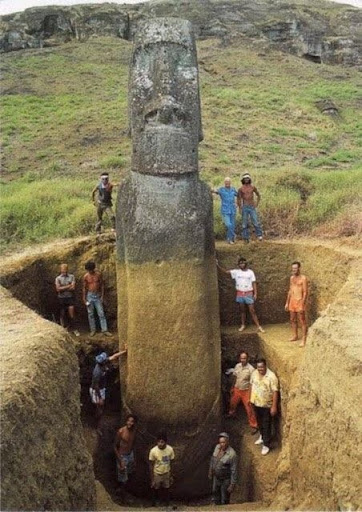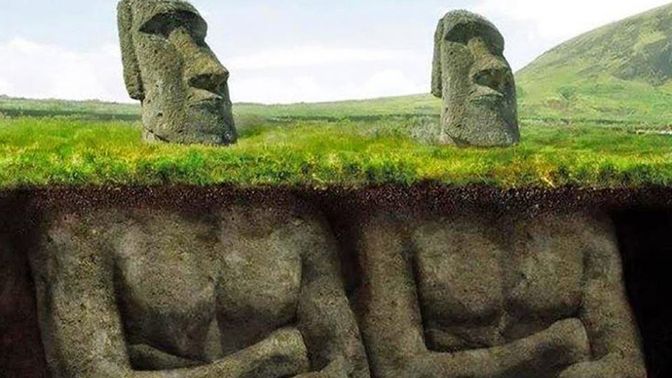Easter Island, or Rapa Nui, is famous for its enigmatic moai statues, which have captivated archaeologists and tourists alike for centuries. These colossal stone heads are shrouded in mystery, but what many people don’t know is that these iconic heads actually have bodies buried beneath the ground. In this article, we will explore the incredible discovery of the bodies beneath the Easter Island statues and what it reveals about the island’s history and culture.

#### The Discovery of the Moai Bodies
For many years, the moai statues were thought to be just heads due to the way they were depicted in photographs and the visible parts above ground. However, in the 1910s, archaeologists began to uncover the truth: the statues have bodies buried beneath the surface. This revelation was further confirmed by extensive excavations carried out by the Easter Island Statue Project (EISP) in the early 21st century.

The EISP excavations revealed that the statues, which can be up to 33 feet tall and weigh as much as 82 tons, are complete figures with torsos and even detailed carvings on their backs. These carvings include petroglyphs and symbols that provide valuable insights into the culture and beliefs of the Rapa Nui people.
#### The Significance of the Moai Bodies
The discovery of the bodies beneath the heads changes our understanding of the moai statues and their significance. The statues were not merely heads placed on the ground; they were full figures, carefully crafted and erected by the Rapa Nui people. The fact that the bodies were buried suggests that the statues were partially covered intentionally, possibly due to changing environmental conditions or cultural practices.

The carvings on the bodies offer a glimpse into the island’s history and the skills of its ancient inhabitants. The petroglyphs depict various symbols, including those related to the birdman cult, an important part of Rapa Nui’s religious and cultural life. These carvings help archaeologists piece together the island’s past and understand the role of the moai in the society that created them.
#### The Construction and Transportation of the Moai
One of the most fascinating aspects of the moai statues is how the Rapa Nui people were able to construct and transport these massive figures. The stone used for the statues came from the Rano Raraku quarry, where the majority of moai were carved. After carving, the statues were transported to various locations across the island, a feat that required incredible ingenuity and effort.
Theories about how the moai were moved range from the use of wooden sledges and rollers to a technique known as “walking” the statues, where ropes were used to rock the statues back and forth, moving them forward in a controlled manner. The latter theory has gained traction in recent years, supported by experiments that have demonstrated its feasibility.
#### The Cultural Legacy of the Moai
The moai statues are more than just impressive works of art; they are a testament to the ingenuity, resourcefulness, and cultural richness of the Rapa Nui people. Each statue is believed to represent an important ancestor, and their placement around the island was intended to project protection and power over the surrounding land and its inhabitants.
The effort and resources required to create and move the moai suggest a highly organized and cooperative society. The statues also reflect the spiritual and religious beliefs of the Rapa Nui, emphasizing the importance of ancestors and their role in the community.
The revelation that the iconic head statues on Easter Island actually have bodies beneath the ground adds a new layer of intrigue and significance to these already fascinating monuments. As archaeologists continue to study the moai and the culture that created them, we gain a deeper appreciation for the complexity and achievements of the Rapa Nui people.
The moai statues of Easter Island stand as enduring symbols of human creativity and perseverance. Their hidden bodies remind us that there is always more to discover beneath the surface, both literally and figuratively, in the study of our world’s ancient civilizations.

